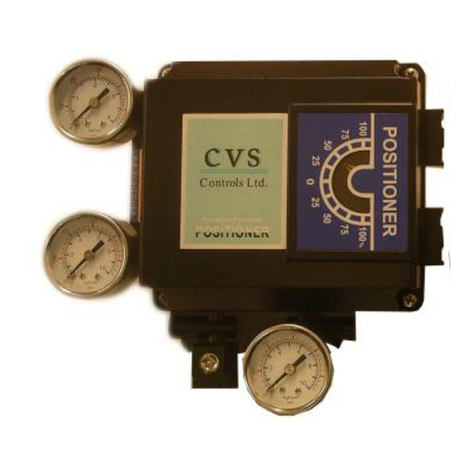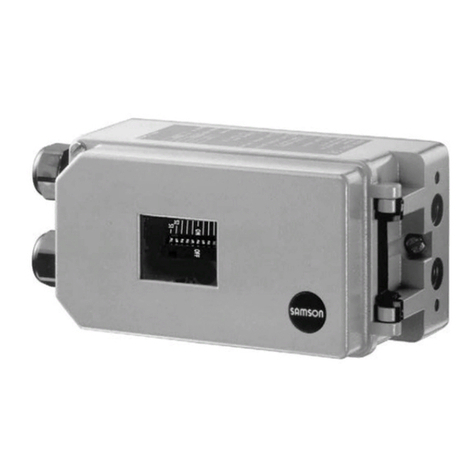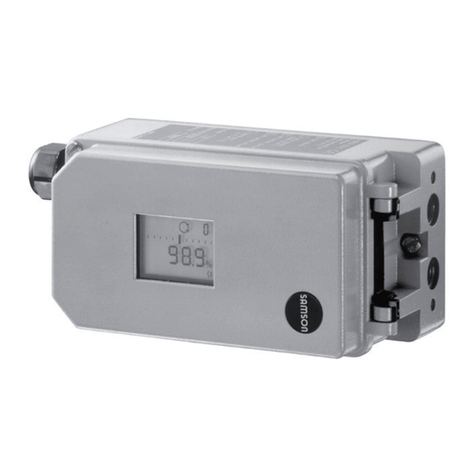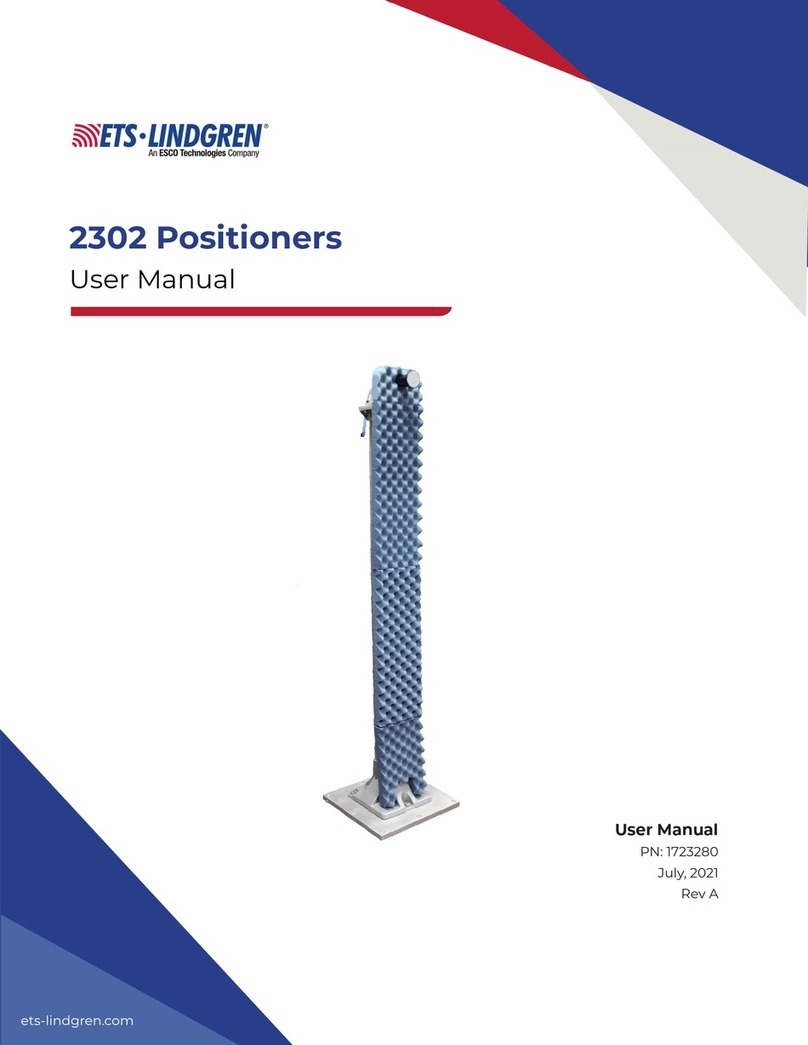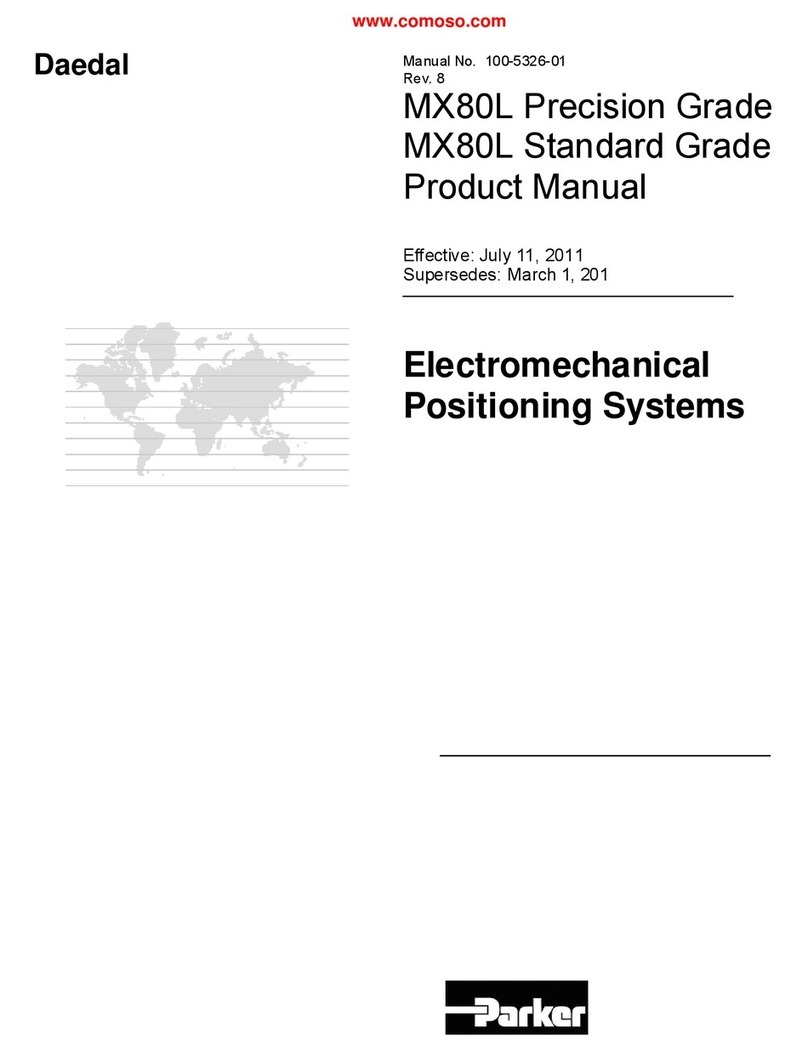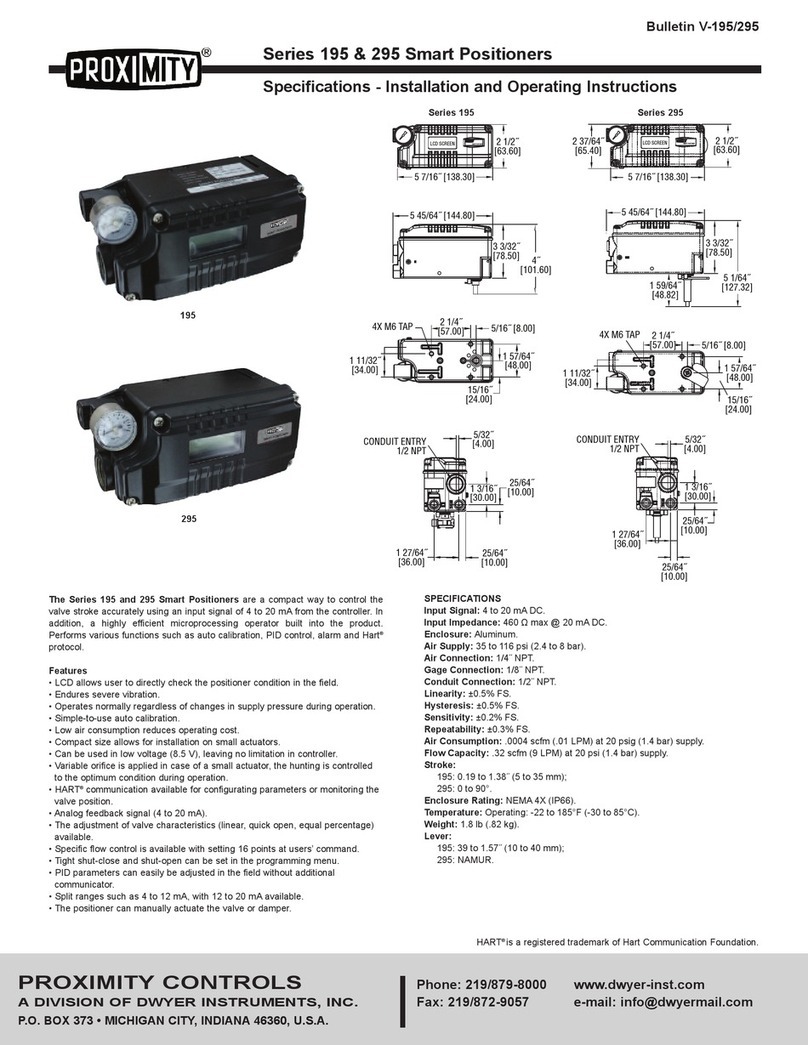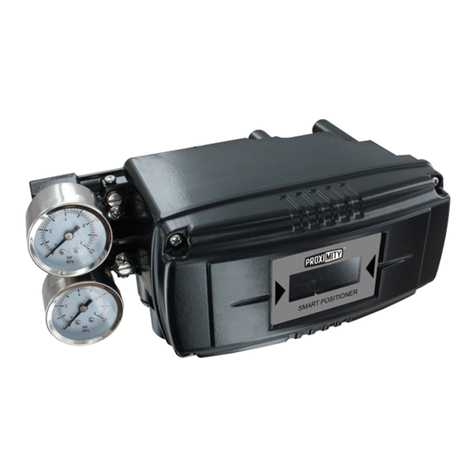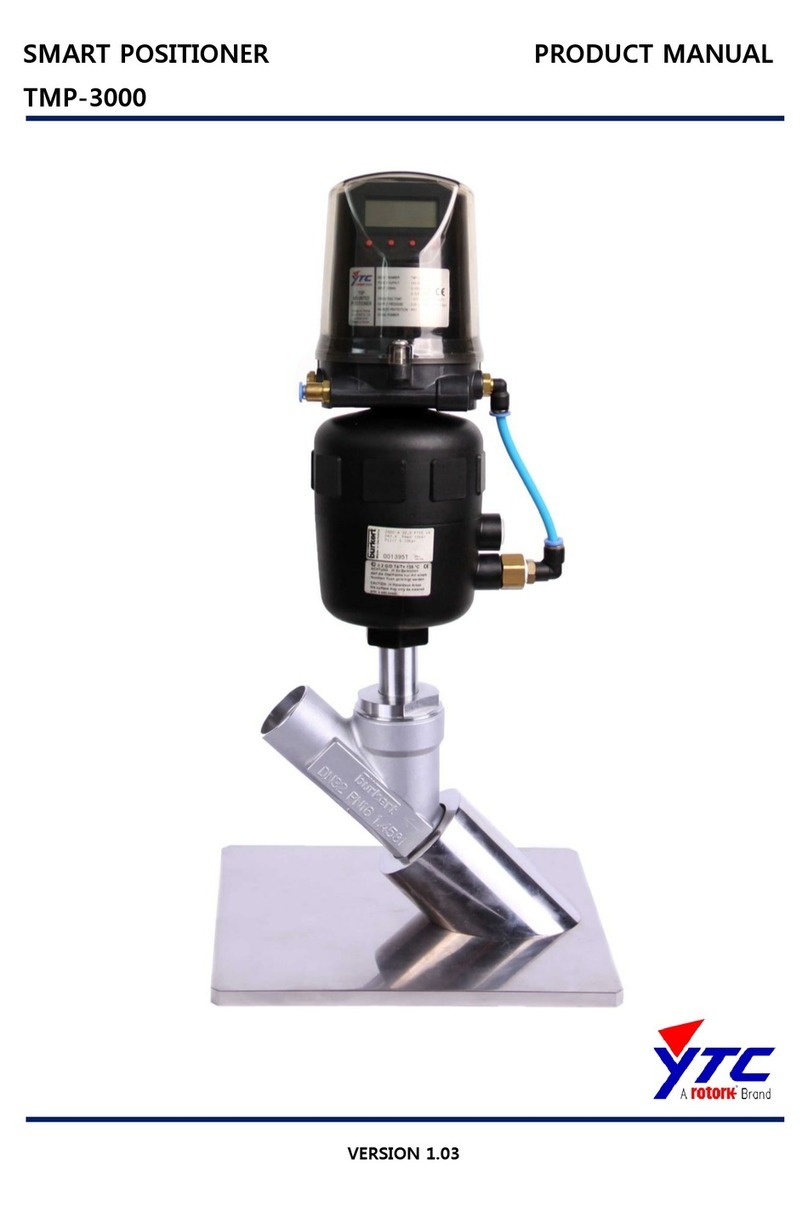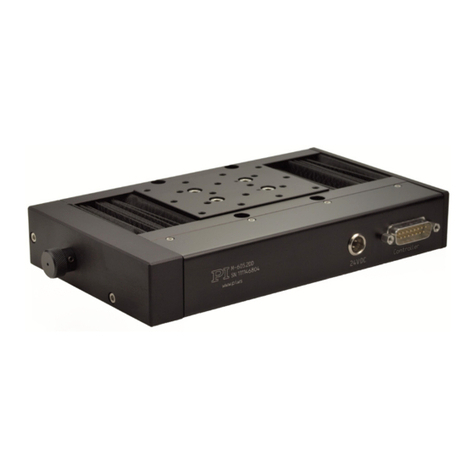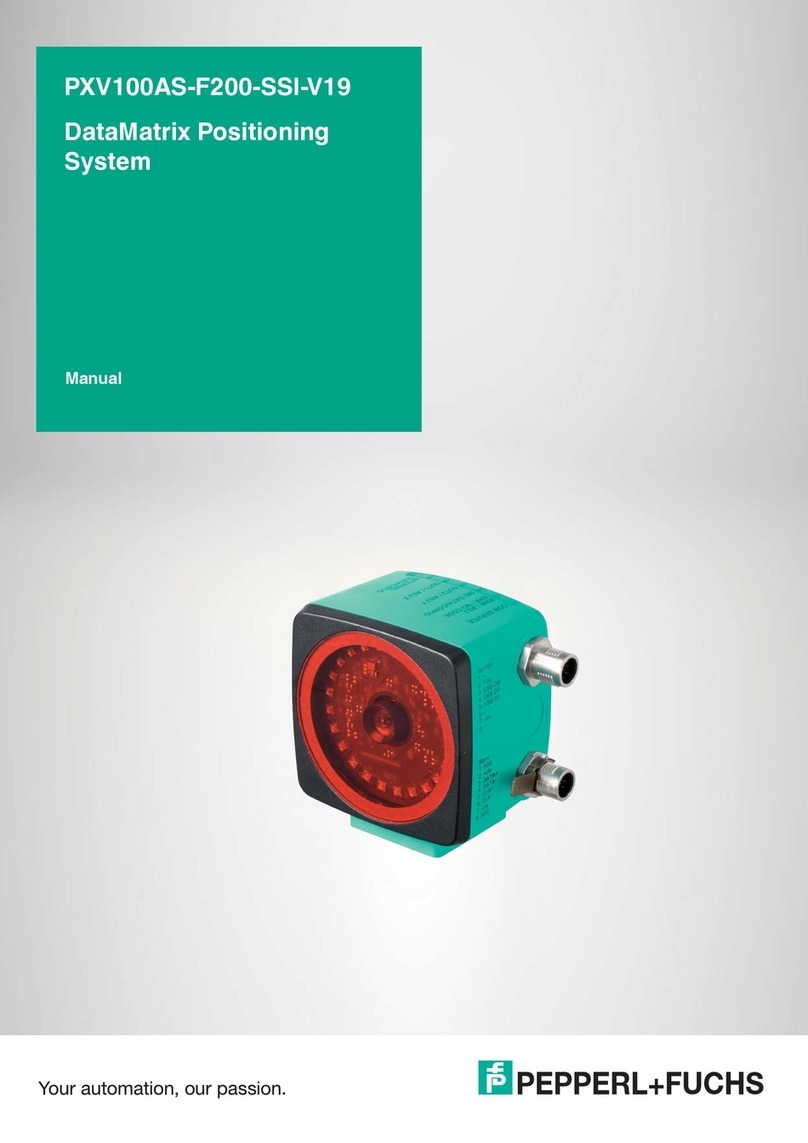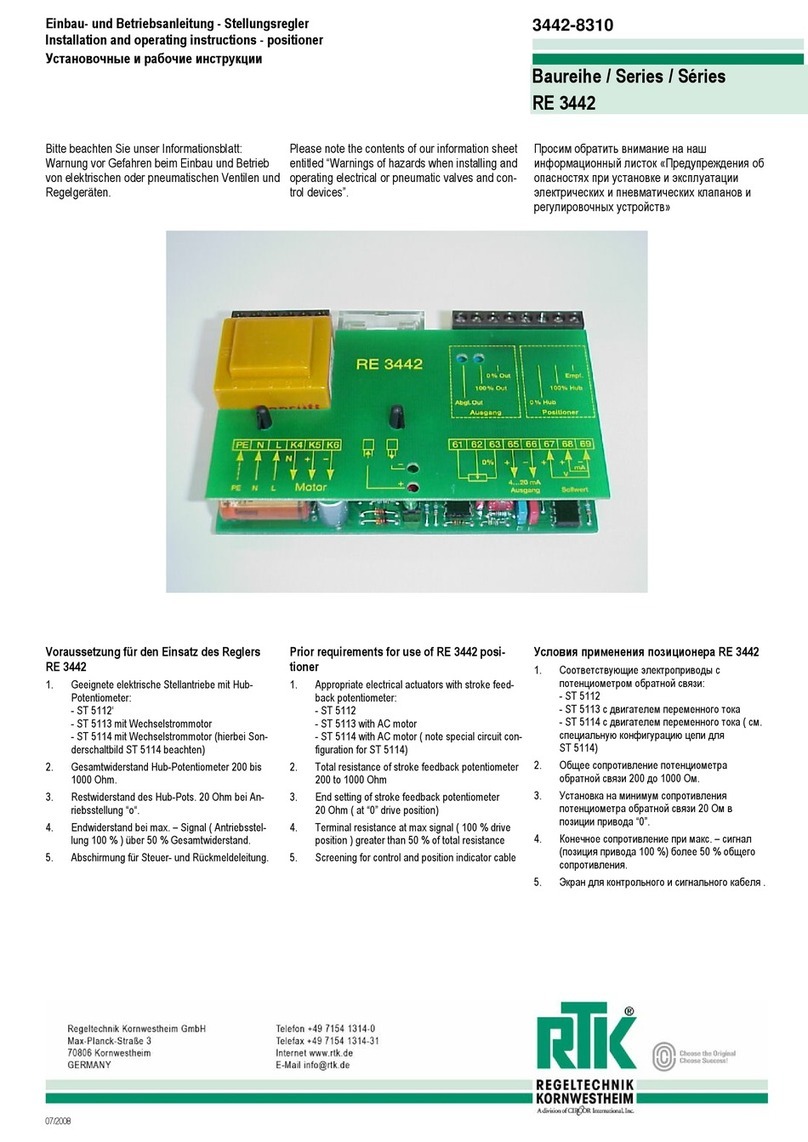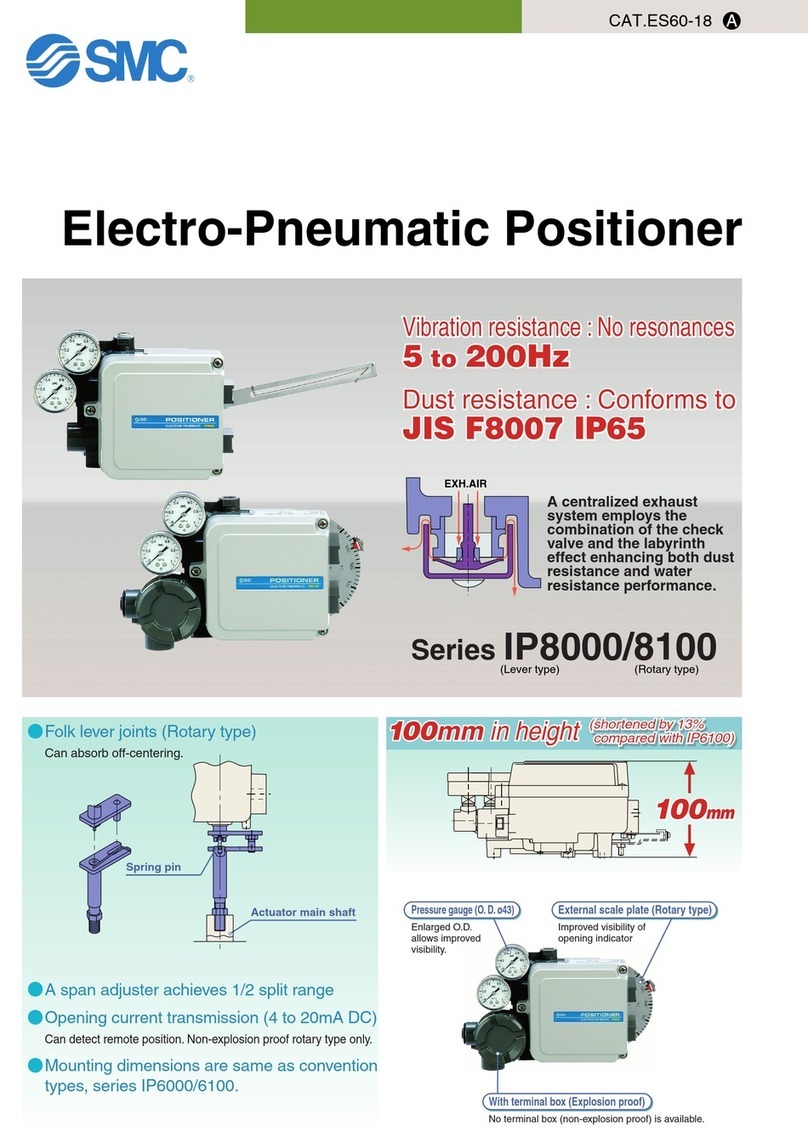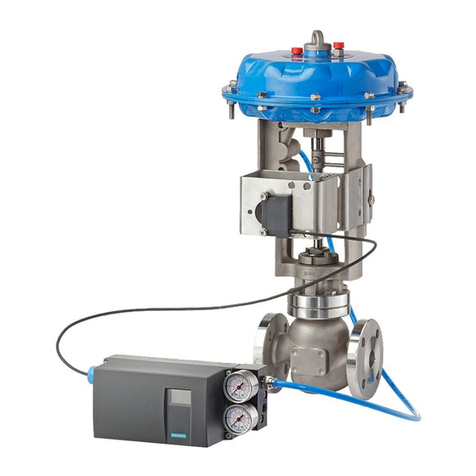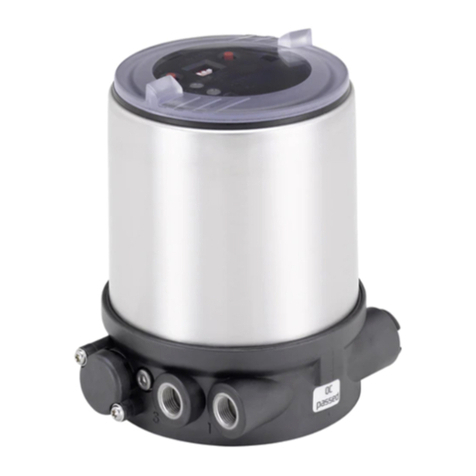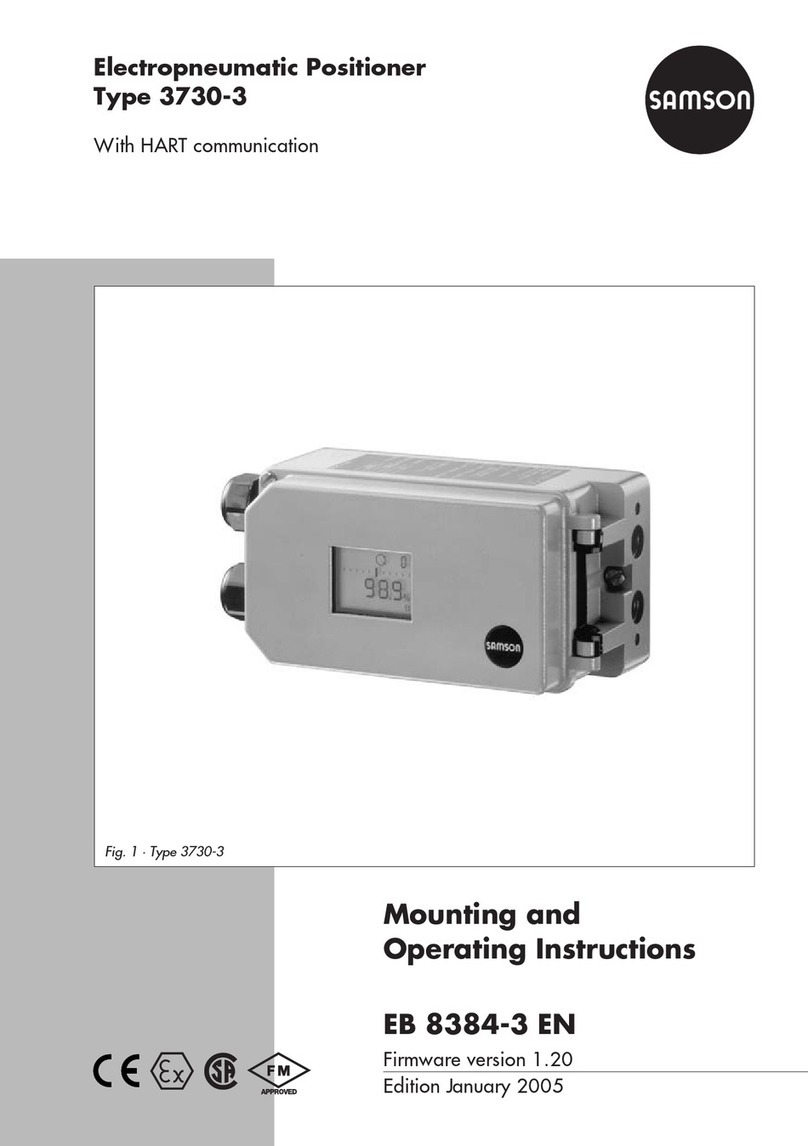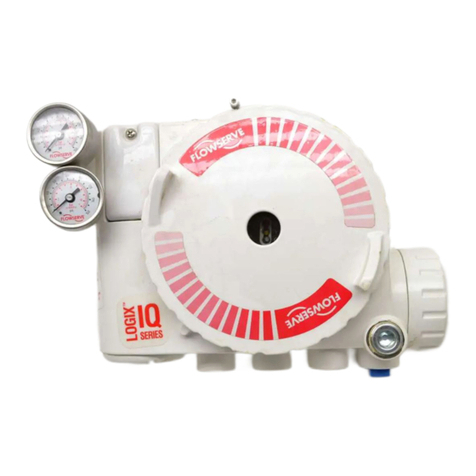
TABLE OF CONTENTS
SECTION TITLE PAGE
1.0 INTRODUCTION..................................................................................................3
1.1 MODEL DESIGNATION...........................................................................................3
1.2 SPECIFICATIONS...................................................................................................4
2.0 INSTALLATION.....................................................................................................5
2.1 SHIPPING AND STORAGE.....................................................................................5
2.2 MECHANICAL INSTALLATION................................................................................5
2.2.1 PROCEDURE..............................................................................................6
2.3 PNEUMATIC CONNECTIONS.................................................................................9
2.3.1 PIPING......................................................................................................10
2.3.2 INSTRUMENT AIR REQUIREMENTS.........................................................10
2.4 CAM INSTALLATION............................................................................................11
2.4.1 CAM IDENTIFICATION...............................................................................11
2.4.2 EQUIPMENT NEEDED...............................................................................11
2.4.3 PROCEDURE............................................................................................11
3.0 CALIBRATION....................................................................................................16
3.1 EQUIPMENT NEEDED..........................................................................................16
3.2 PROCEDURE.......................................................................................................16
4.0 PRINCIPLE OF OPERATION.............................................................................20
5.0 MAINTENANCE..................................................................................................22
5.1 RESTRICTION......................................................................................................22
5.2 FILTER SCREENS................................................................................................22
LIST OF ILLUSTRATIONS
SECTION TITLE PAGE
2-1 Cam and Associated Hardware..............................................................................7
2-2 Typical Positioner Mounting and Feedback Pin Connection....................................8
2-3 Standard Cam Characteristics..............................................................................13
2-4 Cam Installation, A Side Example.........................................................................14
2-5 Cam Installation, B Side Example.........................................................................15
3-1 Calibration............................................................................................................17
4-1 Schematic............................................................................................................21
9/94
PAGE 2 BULLETIN F-56
Bulletin F-56 6/27/05 9:37 AM Page 2
